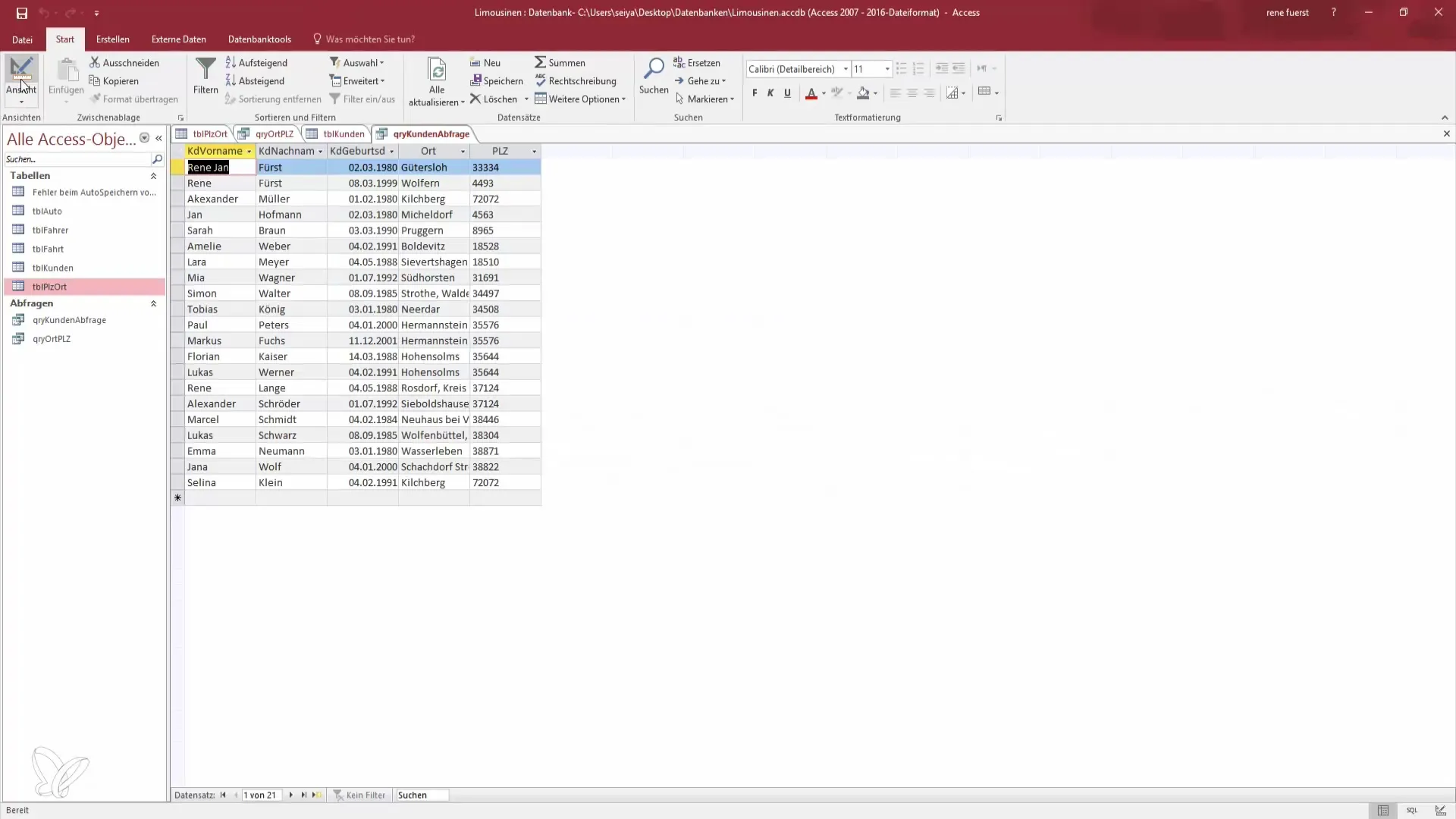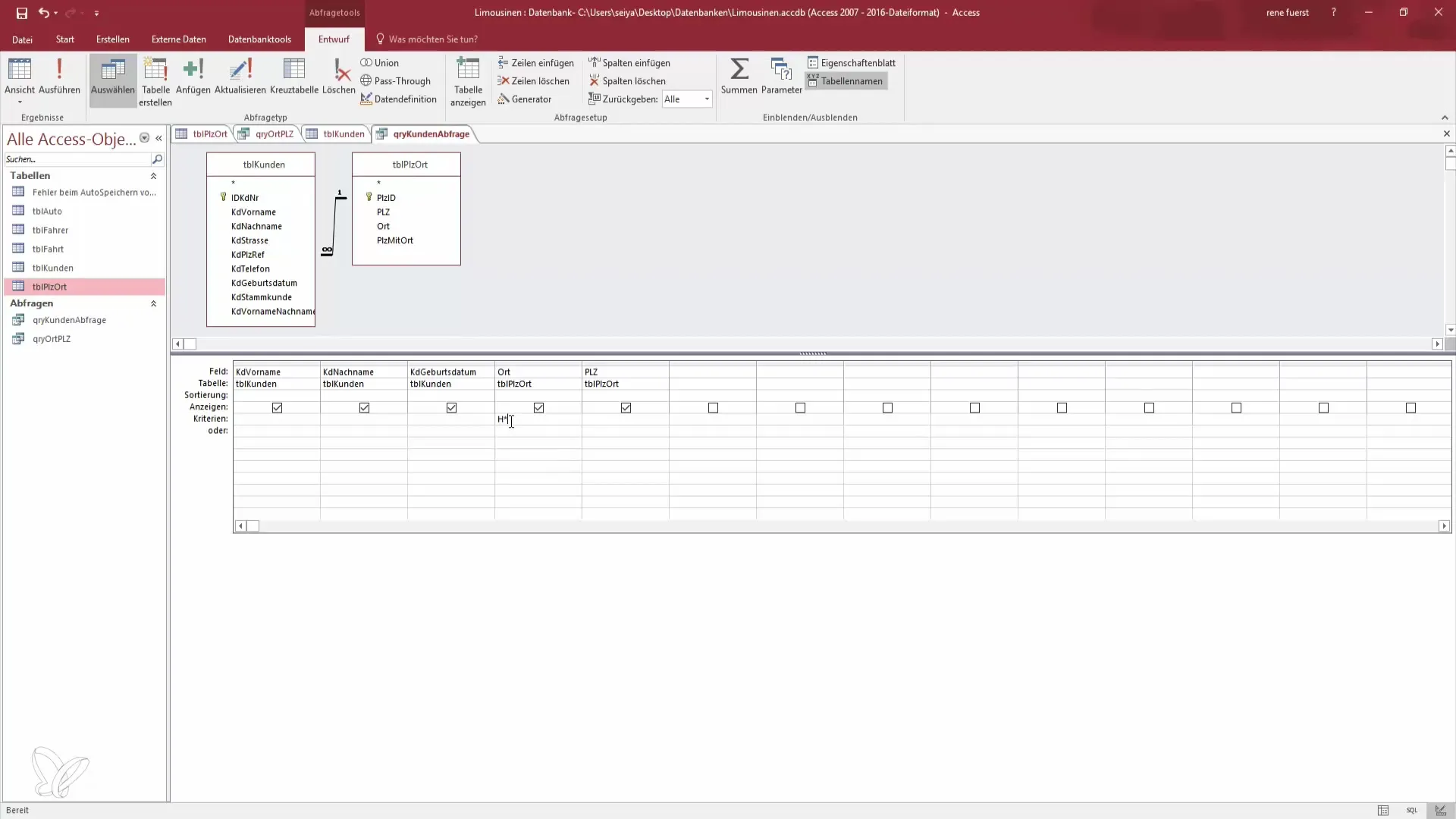The OR-criterion in Microsoft Access is a powerful function that allows you to filter records and thus display only the information that is important to you. For example, if you have a database with many postal codes and locations, it can be cumbersome to filter out only the relevant entries. In this guide, you will learn how to use the OR criterion effectively to identify various records at once.
Key Insights
- The OR criterion allows you to combine multiple search criteria.
- You can save queries and call them up later, which enhances efficiency.
- A targeted approach to queries is especially advantageous in large databases.
Step-by-Step Guide
Step 1: Access the Design View
To familiarize yourself with the OR criterion in Access, you start in design mode. Here you can make all the necessary changes to your query.

Step 2: Set the First Criterion
Start with the criterion for the location. For example, you enter "hstern" for the first search condition. This is the first step to limiting the search to a specific group of records.

Step 3: Add More Criteria
Now it's time to add more search criteria. You can add the criterion "wstern." This ensures that not just one location, but several are displayed.
Step 4: Insert Additional Criteria
If there are other locations you want to consider, you can add those as well with an OR criterion. For example, you can search for "A stern" and capture similar locations.
Step 5: Execute the Query
After you have defined all desired imports, you run the query. When you return to the data view, you will see the combination of all entered criteria. You will receive a variety of entries, all starting with the desired letters.

Step 6: Sort the Results
After retrieving the data, you can sort the results. This makes it easier to quickly find the desired information and gives you a better overview of the data.
Step 7: Save the Query
An important step is saving your query. You can save it under a specific name like "Locations A to F" to access it quickly for future queries.
Step 8: Use Pre-made Queries
You can use the OR criterion to create pre-made queries for specific movie databases. Search for genres or age ratings to efficiently organize your data.
Step 9: Dealing with Large Datasets
The larger the database becomes, the more extensive the management of the data will be. Effective queries are crucial for keeping track, especially when working with multiple datasets.
Summary – OR Criterion in Access: Your Step-by-Step Guide to Data Visibility
In this guide, you learned about the application of the OR criterion in Microsoft Access. You now know how to combine multiple search criteria and efficiently save queries. This is especially valuable when managing large amounts of data and quickly needing the required information.
Frequently Asked Questions
How can I use multiple criteria at the same time?You can combine multiple criteria in a query by using the OR criterion.
Can I save the query?Yes, you can save the query to quickly call it up later.
How do I sort the query results?The query results can be sorted using the sorting function in Access, so you can find the desired information faster.
What happens when the database grows?As the database grows, it becomes more important to use effective queries to maintain oversight.


